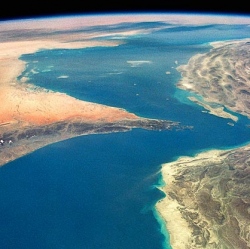
Astronomers have analyzed the atmosphere of a nearby exoplanet and found that there are plenty of scenarios where it could have liquid water – and by extension, possibly life – on its surface. This new study adds weight to the idea that habitable exoplanets don’t have to be strictly Earth-sized.
The exoplanet in question is known as K2-18b. Located 124 light-years away, it orbits in its host star’s habitable zone, where temperatures are just right for water to potentially exist as a liquid on its surface. Better yet, last year astronomers detected large quantities of water vapor in its atmosphere.
K2-18b is about 2.6 times wider and 8.6 times more massive than our home planet, which places it between Earth and Neptune in size. Those two planets are obviously very different of course, so there’s quite a range of possibilities for what kind of world K2-18b may be.
Is it a Super-Earth – a large rocky world with a thin, hospitable atmosphere and water on the surface? Or is it more of a mini-Neptune, with a much thicker, suffocating atmosphere surrounding a smaller rocky core? The answer would drastically affect its habitability. So, astronomers on the new study set out to examine it in closer detail.
“Water vapor has been detected in the atmospheres of a number of exoplanets but, even if the planet is in the habitable zone, that doesn’t necessarily mean there are habitable conditions on the surface,” says Nikku Madhusudhan, lead researcher on the new study. “To establish the prospects for habitability, it is important to obtain a unified understanding of the interior and atmospheric conditions on the planet – in particular, whether liquid water can exist beneath the atmosphere.”
The main differences between an Earth-like and a Neptune-like exoplanet come down to the ratio of atmosphere-to-rock, as well as the composition of both. So astronomers from Cambridge analyzed the atmosphere of K2-18b, to determine what the most likely combinations were.
They confirmed that the atmosphere is rich in hydrogen, and contains plenty of water vapor. Interestingly, chemicals like methane and ammonia were lower than scientists might expect for this kind of atmosphere.
From this data, the team was able to examine the range of possible types of world that K2-18b is. They found that the hydrogen made up, at most, 6 percent of the planet’s mass, but could be as low as one-millionth of its total mass. That’s good news – the latter figure is comparable to Earth.
